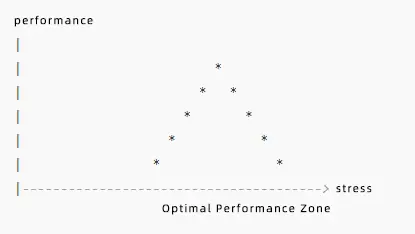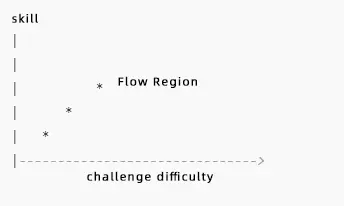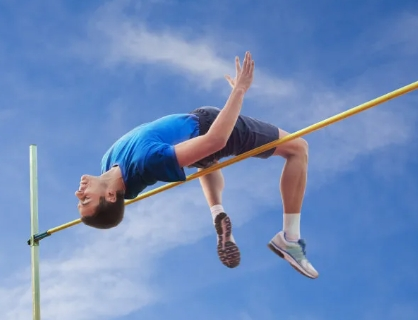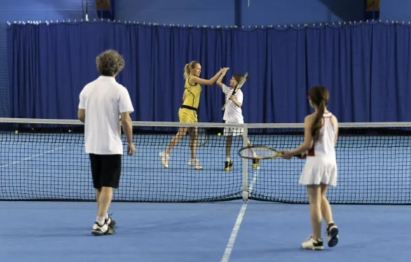Interesting Phenomena in Sports Psychology during Physical Activities
In physical activities, there are many fascinating and challenging phenomena and theories in sports psychology. These don’t just concern athletes' technical performance but also involve how to manage emotions, motivation, anxiety, stress, and utilize psychological skills to enhance performance. The following are some interesting sports psychology phenomena and related examples:
1. "Inverted-U Hypothesis"

Athletes often experience anxiety during competitions or training. According to the "Inverted-U Hypothesis," moderate anxiety can boost athletes' performance, but excessive anxiety negatively impacts performance. It’s a curve shaped like an inverted "U," where performance improves with increasing anxiety up to a certain threshold but declines when anxiety exceeds this level.
- Example: In a high-level marathon, athletes usually feel a certain level of anxiety before the race, which helps increase their focus and readiness. However, excessive anxiety may lead to heightened nervousness, causing a rapid heartbeat, muscle tension, and poor overall performance.
- Explanation: This phenomenon can be managed through training and psychological adjustment. Moderate anxiety activates body functions, enhances alertness and reaction speed, but excessive anxiety triggers the "fight or flight" mode, wasting energy, causing muscle stiffness, and diverting attention, ultimately harming performance.
2. "Flow State"

The concept of "flow state," introduced by psychologist Mihaly Csikszentmihalyi, is particularly important in sports. Athletes perform their best when they are "in the zone." During this state, they are completely immersed in the activity, and time seems to stop, with all actions feeling natural and smooth. Sometimes called "being in the zone," it is a highly focused and stress-free mental state.
- Example: A professional tennis player becomes fully immersed during a match, forgetting external pressures and distractions while seamlessly executing precise and consistent techniques. This state boosts confidence, relaxation, and energy.
- Explanation: The key to achieving flow is balancing task difficulty with personal skills. Simple tasks lead to boredom, while overly difficult ones cause anxiety. Flow typically requires sufficient skill and complete concentration on the activity.
3. Mirror Neurons and Motor Learning
Mirror neurons activate when we observe others' actions, playing a crucial role in mimicking and learning new skills. These neurons assist athletes in improving their techniques by observing others’ movements.
- Example: A child learning gymnastics watches another athlete perform a difficult move, replicating their posture and movements to gradually enhance their skills. Even without executing the move themselves, observation activates mirror neurons, aiding them in mastering the movement’s intricacies.
- Explanation: Mirror neurons allow athletes to "practice" movements through observation, imagination, and rehearsal without physical execution. This is why techniques like video analysis are integral to elite athletes’ training routines.
4. "Self-Efficacy"
Self-efficacy refers to an individual’s confidence in completing a specific task. In sports, self-efficacy directly impacts athletes' performance. Athletes with high self-efficacy are more composed under pressure and believe in their ability to succeed.
- Example: A high jumper repeatedly breaks their personal best during training, boosting their confidence for the competition, where they ultimately surpass their previous limits and achieve new heights.

- Explanation: Factors like past experience, encouragement from others, and social support contribute to self-efficacy. Success in previous challenges enhances self-efficacy, motivating athletes to perform better in the future.
5. "Groupthink" and Team Cohesion
In team sports, "groupthink" refers to a phenomenon where members emphasize consensus to avoid conflict, potentially leading to flawed decisions or strategies. However, strong team cohesion and communication can mitigate this issue, improving performance.
- Example: In a basketball game, if players trust and closely collaborate with each other, they can execute tactics seamlessly under pressure. Conversely, a lack of cohesion might lead to miscommunication, costing the team a win.
- Explanation: Groupthink and team cohesion present contrasting dynamics. Groupthink results in blind conformity, discouraging diverse opinions, whereas high cohesion fosters mutual support, enabling the team to face challenges together.
6. "Achievement Motivation"
Achievement motivation theory suggests two basic types of motivation in athletes: the "desire to achieve success" and the "fear of failure." The former drives athletes to face challenges actively, while the latter heightens anxiety and avoidance behaviors.
- Example: A soccer player taking a crucial penalty kick is driven by the desire to succeed, remaining focused and scoring effectively. Conversely, another player might succumb to fear of failure, missing the opportunity.
- Explanation: The type of achievement motivation determines athletes’ psychological reactions and performance. Athletes with strong success-oriented motivation recover quickly from failures and stay composed under pressure, while those dominated by fear of failure often feel uneasy, affecting their performance.
7. "Regression to the Mean"
In sports, athletes sometimes exhibit exceptionally good or poor performances, known as "regression to the mean." If an athlete performs unusually well or poorly in one match, they often return to their average level in subsequent games.
- Example: A tennis player defeats the world’s number one with outstanding performance in a match but fails to sustain the same level in the next game, making several errors.

- Explanation: This phenomenon explains that extreme performances — whether exceptional or poor — are often due to external factors. Performance eventually stabilizes at a normal, consistent level.
These intriguing sports psychology phenomena reveal how athletes’ mental states influence their performance and provide insights into improving sports performance through psychological techniques and training.





